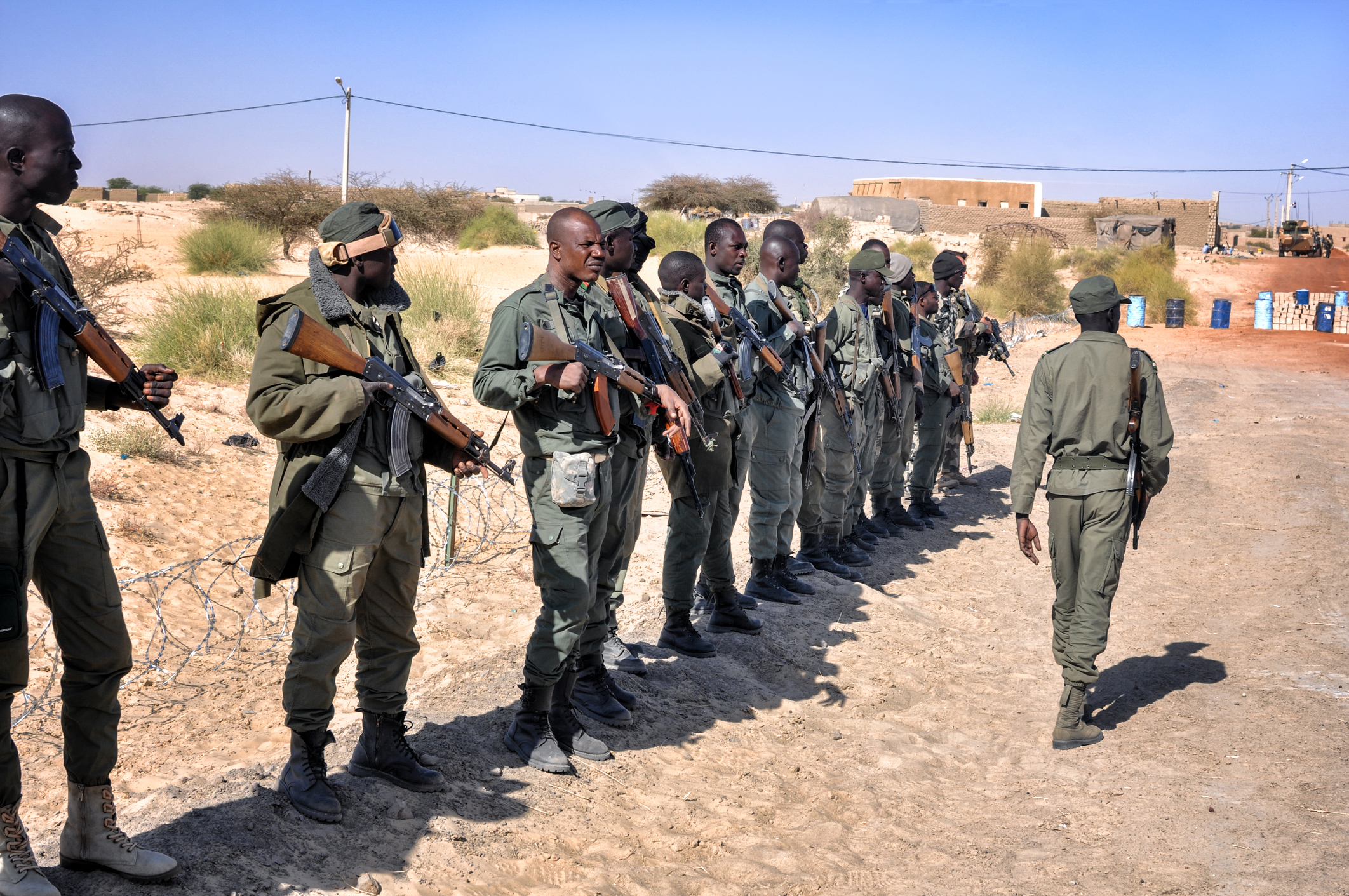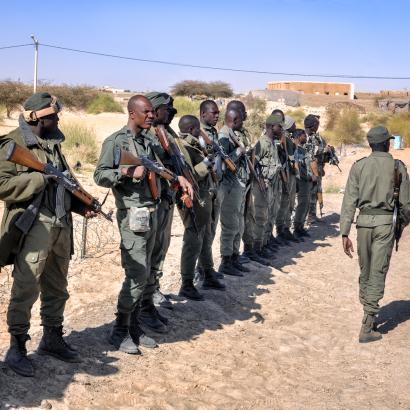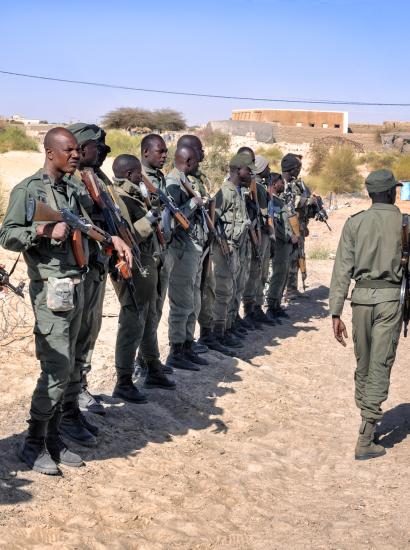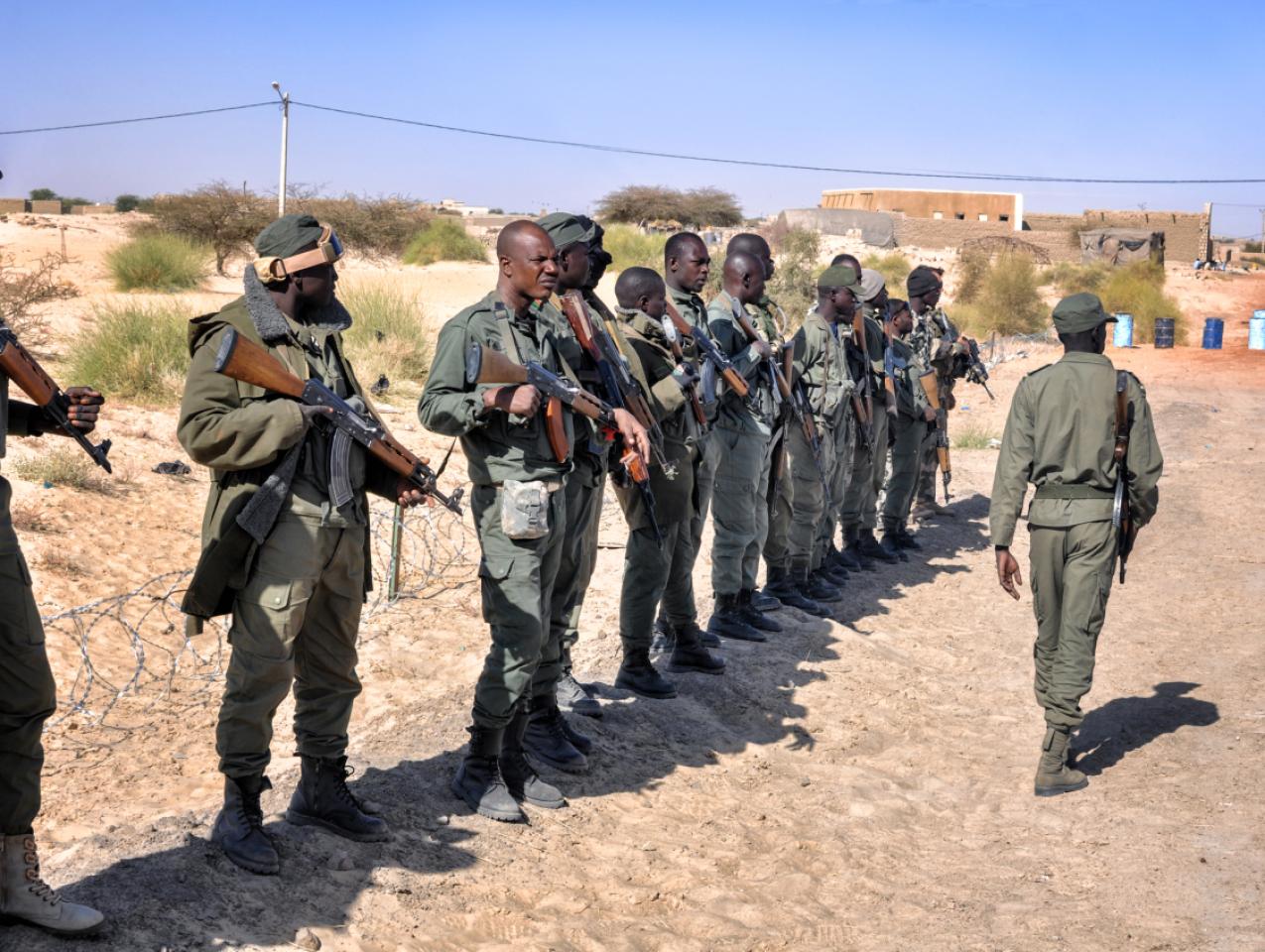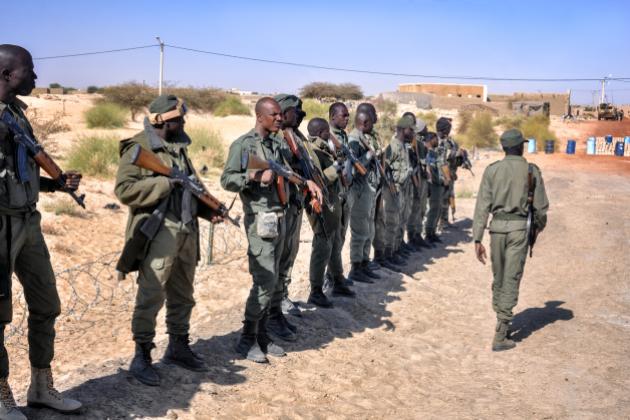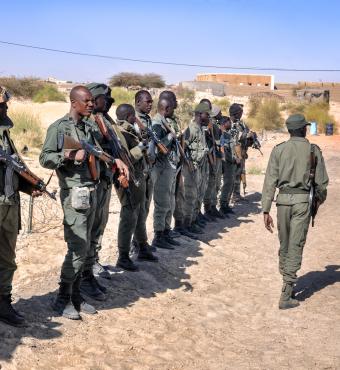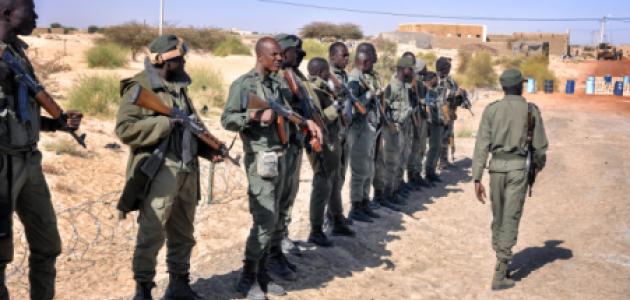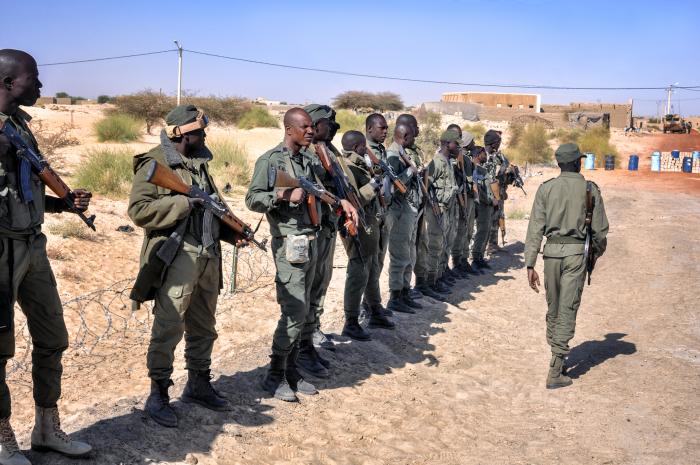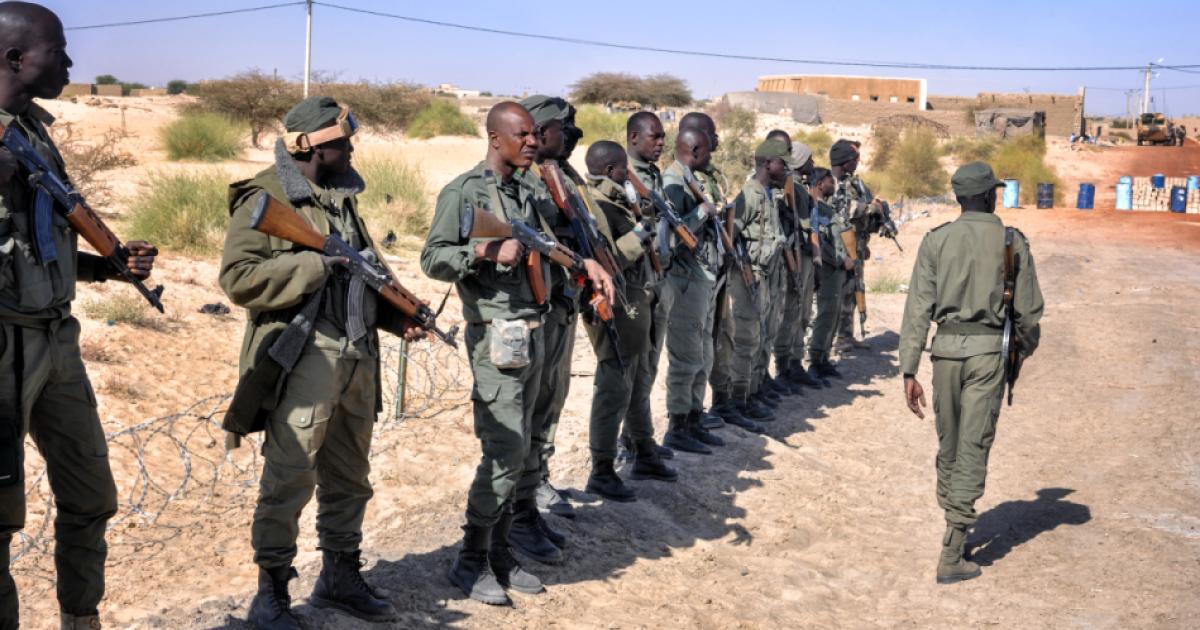- Middle East
Nearly a decade ago, as the Islamic State (IS) gained territorial ground in Iraq and Syria and declared a caliphate whose territory spanned the borders of both countries, the group’s propaganda pushed the now familiar slogan of “remaining and expanding.” There was the stated belief that the group’s caliphate would not only endure as a territorial entity but would also gain ground in Iraq, Syria and elsewhere. This vision was reinforced by the group’s declarations of wilayas (“provinces”) elsewhere in Africa and Asia during late 2014 and early 2015: Libya, Algeria, Sinai, Khorasan (Afghanistan), Yemen, Saudi Arabia, the Caucasus and West Africa.
Today, “IS central” in Iraq and Syria has little to show for any concept of territorial control, having lost its last strip of territory in Baghuz in March 2019. As an insurgency, the group is generally holding out but at a low intensity level, and it is frequently losing leading figures in operations conducted by the U.S-led coalition and other actors. Indeed, the group already went through two “caliphs” in 2022 alone.
Insofar as the slogan of “remaining and expanding” has any propaganda value for IS now, it mainly lies in the group’s “expansion” into sub-Saharan Africa in recent years with formal affiliates for the group now operating not only in Nigeria and the surrounding Lake Chad region as the “West Africa province,” but also in the wider Sahel (“Sahel province,” which was previously attached to the West Africa province), Somalia (“Somalia province”), the Democratic Republic of Congo (“Central Africa province”) and Mozambique (“Mozambique province,” which was previously attached to the Central Africa province).
Among these affiliates, the West Africa and Sahel provinces are the most notable in terms of the Islamic State's exercise of significant territorial control and implementation of some aspects of IS governance that were seen in Iraq and Syria during the height of IS central’s success, such as enforcing zakat taxation, operating a court system and a hisba apparatus (a kind of morality police).
The Sahel affiliate’s growth is particularly notable as it comes in spite of its bloody internecine rivalry with Jama‘at Nusrat al-Islam wa-l-Muslimin (JNIM), the Sahel affiliate of al-Qa‘ida in the Islamic Maghrib (AQIM). Abu Yasir al-Jaza’iri, a leading figure in AQIM, recently issued a speech urging JNIM to continue the fight against the “Kharijites” (referring to the Islamic State, utilizing a term used in Sunni discourse more generally to refer to those perceived to be extremists and transgressing against Muslims).
The other sub-Saharan affiliates have not obtained the level of success of the West Africa and Sahel affiliates but (with the exception of the Somalia province) pose ever-growing security challenges for local governments and their armed forces.
Given the growing profile of most of the IS sub-Saharan affiliates as opposed to IS central’s inability to rise again, it is unsurprising that the group’s central media apparatus has repeatedly commended these affiliates. In an editorial published by its weekly Arabic-language newsletter al-Naba’ in June 2022, the group recommended to supporters who missed out on making hijra (“emigration”) to Iraq, Syria or elsewhere in the past that they should now seek to migrate to their “brothers in the land of Africa, for it is today a land of hijra and jihad.” An editorial published at the start of May similarly hailed the “jihad of the Muslims today in Mozambique, the Congo and other places [in Africa]” as making “the tawagheet” (non-Muslim and “apostate” rulers) realize that they are now in a “new era” in which the “awakening of the Muslims” that they feared has now come to fruition.
Much has already been written on the local origins of the sub-Saharan affiliates including in Mozambique and the Democratic Republic of Congo. What is clear, however, is that whatever the local nuances and grievances behind the origins of these affiliates, they have clearly developed contacts with IS central, and this relationship is based on ideological affinity and loyalty to the central leadership. This relationship is illustrated in the claims of operations, photo reports and video releases issued in the name of these affiliates.
For example, the Central Africa province regularly issues claims of specifically targeting Christians in its areas of operations, based on the idea that unless Christians convert to Islam or agree to abide by a dhimmi pact under IS, whereby they pay the jizya poll tax and adhere to various restrictions imposed by IS (an arrangement that notably existed before in Raqqa and the Homs desert town of al-Qaryatayn during IS’s rule in those parts of Syria), then they are not entitled to any protection of life or property and will face consequences. The same approach is also exhibited by the other sub-Saharan affiliates that are operating in areas where Christian populations exist. In the Sahel region, the infighting with al-Qa‘ida is portrayed as a fight against “apostates,” consistent with IS’s position that al-Qa‘ida is an “apostate” organization because of its supposed treachery against Muslims and aid for the enemies of Muslims.
Moreover, when the group’s last “caliph” Abu al-Hasan al-Hashimi al-Qurashi was announced to have been killed and Abu al-Husayn al-Husayni al-Qurashi appointed as his successor, the sub-Saharan affiliates all released visual documentation of their members’ declaring their allegiance to the new “caliph,” despite the fact that the organization has said virtually nothing about his identity, giving him no air of credibility.
There is little evidence to suggest tensions at the present time between these African affiliates and “IS central,” which is likely responsible for appointing or at least approving local nominations of “governors” to oversee these affiliates. The only major known episode of tension in the years since IS first officially declared its expansion into sub-Saharan Africa in 2015 was the split that occurred within the West Africa affiliate between Abu Bakr Shekau (the original leader of the affiliate who was deposed by order of or with the approval of the central leadership and went on to lead his own splinter faction) and those who remained officially affiliated with IS. The split was documented in considerable detail in a book released by leading members of the West Africa affiliate in 2018 characterising Shekau and his followers as “Kharijites” who had to be fought. Shekau’s group was largely dismantled in an offensive launched by the West Africa affiliate in 2021 on the Sambisa Forest area, killing Shekau in the process. However, remnants of Shekau’s group appear to have survived and continue to attack the West Africa province.
One of the likely reasons for the lack of tensions at present is that IS central ultimately managed to chart a coherent way forward amid the ideological tensions that rocked the group in Iraq and Syria in the period 2016-2019—disputes that were documented most extensively by Cole Bunzel[1] and pertained to issues such as application of takfir (the process of declaring someone else to be an unbeliever). For a time, an internal dissent movement arose within IS central that believed the leadership was moving in an “extremist” direction. The central leadership ceded ground to this internal pressure, issuing a new audio series on the group’s “methodology” and reclaiming the legacy of Turki Bin‘ali, the chief IS “scholar” who was venerated by the dissenters and was killed in an airstrike in 2017. While elements of the internal dissent movement remained unsatisfied and ultimately defected, they have proven unable to turn what remains of “IS central” or its affiliates around the world against the central leadership. Indeed, their output is very infrequent and they seem to have marginalized themselves.
The lack of evidence for ideological tensions between the sub-Saharan affiliates and “IS central” does not exclude the possibility of tensions pertaining to issues such as administrative management and finances, but here too firm evidence for such tensions is lacking. The affiliates largely seem to be left to fend for themselves in terms of financing with “IS central” unable to provide meaningful financial assistance. This arrangement seems to have been accepted by these affiliates, which send regular reports on their activities to “IS central.”
In summary, then, the Islamic State’s sub-Saharan affiliates arguably represent the best hope for the group to continue portraying itself as a force of global relevance and enjoying any sort of success, in marked contrast with its general decline in Iraq and Syria from which it is unlikely to “resurge” for the foreseeable future.
Aymenn Jawad Al-Tamimi is an Arabic translator and editor at Castlereagh Associates, a Middle East-focused consultancy, and a writing fellow at the Middle East Forum. He runs an independent newsletter at aymennaltamimi.substack.com.
[1] Cole Bunzel, “Ideological Infighting in the Islamic State,” Perspectives on Terrorism, Volume 13, Issue 1 (February 2019), pp. 12-21.







